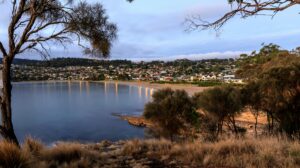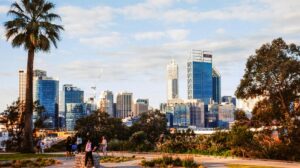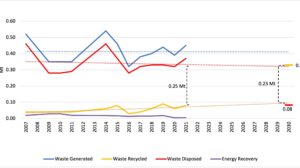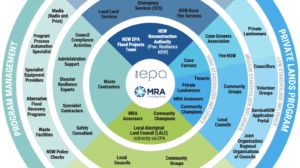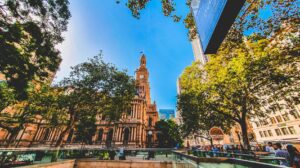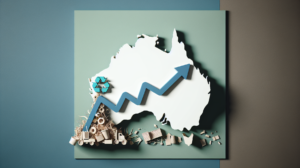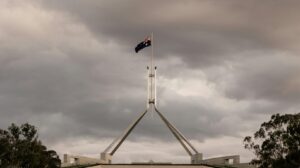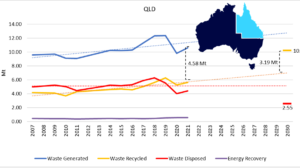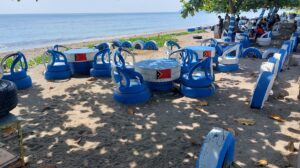Landfill
14 May 2024
Tasmania could achieve the National Waste Targets with concerted action
In contrast to most States, Tasmania could achieve the National Waste Targets by 2030
Landfill
30 April 2024
Can WA achieve the National Waste Targets?
WA on track to lift recovery rates from 60% to 80% by 2030
Landfill
22 April 2024
Can the Northern Territory achieve the National Waste Targets?
In contrast to most States, the Northern Territory has reduced its waste to landfill over the past 15 years.
MRA News
19 April 2024
NSW Flood Recovery Program for Land-based Clean-up Program
In response to previous years' severe flooding events, the NSW EPA executed a Land-based Clean-up Program (the Program), engaging MRA as a specialist flood debris clean- up consultants to assess flood-impacted sites, engage with Program applicants and other stakeholders and coordinate debris removal.
Landfill
10 April 2024
SA- The leader of the recycling pack
Based on the latest National Waste Action Plan report, SA leads recycling rates in Australia by a wide margin.
Policy
28 March 2024
In support of timely national waste data
In any given year, waste data is generally 2-3 years old and out of date. How will we assess whether we achieve the Targets in 2030?
Landfill
11 March 2024
ACT needs to move faster on waste reform
By Mike Ritchie, Director, MRA Consulting Group The ACT recycling rate is 50% and therefore below the existing national average of 55%. Without accelerated reform by the ACT Government, the Territory will also fail to achieve the National Waste Targets of 80% resource recovery and a 50% drop in organics to landfill. Figure 1 shows […]
Infrastructure
29 February 2024
The goal of creating a Circular Economy is slipping through our fingers
State and Commonwealth Government action is necessary for the National Waste Action Plan to succeed and achieve the 2030 targets
Landfill
4 December 2023
Waste myth #9: Increasing plastic recycling is the best way to reduce plastic pollution. It isn’t.
We keep hearing and reading (what we think are) “waste myths” on-line and in mainstream media.
Mike Ritchie has decided to dispel those myths in this "Waste myths" series of articles.
Landfill
20 November 2023
Can QLD achieve the National Waste Targets?
Open letter to Leanne Linard QLD Minister for Environment
Bin Trim
13 October 2023
MRA awarded Bin Trim Networks Program grant
If you work at a shopping centre that is looking to reduce food and packaging waste, reach out to our Circular Economy team.
MRA Projects
25 September 2023
Pacific dealing with waste
In the pacific, SPREP is leaving no stone unturned. Organics recovery, diversion from landfill, EfW, EOL tyres, EPR, legislative reforms, multilateral environmental agreements..
Sign up for all our latest articles
Blog categories
- Awards (9)
- AWT (1)
- Bin Trim (2)
- Carbon (27)
- Circular Economy (48)
- Climate Change (33)
- Compost (20)
- EfW (14)
- Event (12)
- FOGO (27)
- Grants (79)
- In the Media (17)
- Infrastructure (32)
- Landfill (38)
- Legislation (14)
- Levy (7)
- Licencing (5)
- litter (5)
- MRA News (56)
- MRA Projects (10)
- NSW (13)
- Organics (22)
- Planning & Approvals (10)
- Policy (75)
- Recycling (77)
- Regulations (4)
- State of Waste (14)
- State Strategy (28)
- Strategy (49)
- Waste (101)
- Waste Myths (9)
- wastenot (35)
